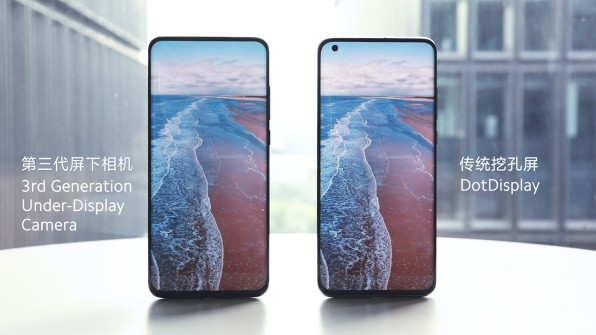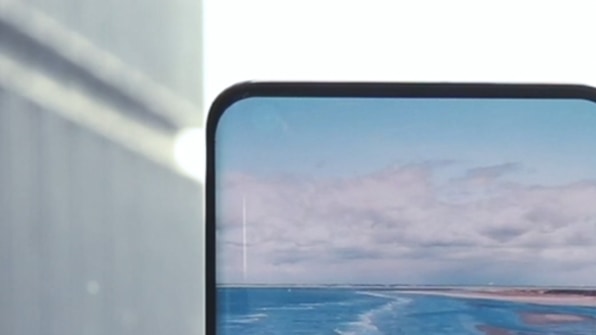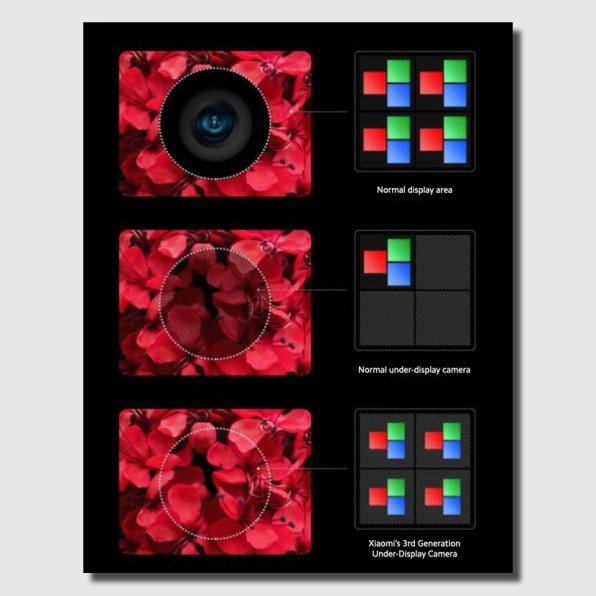Say bye-bye to your front camera. You won’t miss it.

Who can forget the controversy of The Notch. As smartphone companies stretched screen sizes to their theoretical maximums, they realized components like the front-facing selfie camera were getting in the way. Manufacturers wanted to shrink what are known as bezels, those picture frames around the screen. But cameras necessitated bezels! Design was at an impasse.
So, around 2017, the startup Essential introduced the notch, which sliced a controversial black chunk into the screen. Apple jumped on board with the iPhone X, and critics freaked out (the phone never sold that well either). One app developer even designed software to erase the notch. In the three years since, the notch has evolved into more of a hole punch. (Ignore the pop-up camera and sliding phone designs that companies tried along the way—some creatures try to evolve but just go extinct instead.) Phones like the upcoming Pixel 5 or the Samsung Galaxy S10 feature a tiny, perfectly round lens in the corner. But even that lens is still a break in the otherwise seamless screen—a glaringly imperfect design solution, however small.
Now, the Chinese tech giant Xiaomi—which controls about 10% of the global smartphone market share—has teased a once-and-for-all solution to the selfie camera. It’s a camera that lives under the screen and photographs in the microscopic gaps between the screen’s pixels. To make this possible, Xiaomi shrunk the actual pixel size on its display (as opposed to decreasing the amount of pixels and shrinking the resolution), but only on the one small block of its screen above the camera sensor.

Can you notice it? Yes, a little. Even just seeing it on YouTube, you can make out a slight difference in brightness in one tiny part of the screen (it’s dimmer). But it also seems like the sort of imperfection where, if you weren’t actively looking for it, you might not see it at all.


Longer term, this sort of technology could solve another lingering problem: the lack of true eye contact in Facetime and Zoom (a problem so dire that Apple will actually edit your pupils to fake the effect for you). With a camera placed under the middle of the screen, you could look right into someone else’s eyes, and they could look right into yours. As we recently detailed, eye contact is not just some polite social construct. It’s an essential component of communication that the human body recognizes and reacts to at its biological core.
Xiaomi’s camera is still in the upper left corner of the screen, meaning that it’s unlikely to solve the eye contact problem in this generation. But it’s easy to imagine how the camera might appear in subsequent generations or with other manufacturers. That front camera is not going to be visible forever. And the world of communication may actually be a little bit better for it.
"Smartphone" - Google News
September 01, 2020 at 07:00PM
https://ift.tt/2QIBnIZ
Xiaomi teases a notch-free smartphone with under-display camera - Fast Company
"Smartphone" - Google News
https://ift.tt/2QXWyGT
https://ift.tt/2KSW0PQ
Bagikan Berita Ini














0 Response to "Xiaomi teases a notch-free smartphone with under-display camera - Fast Company"
Post a Comment